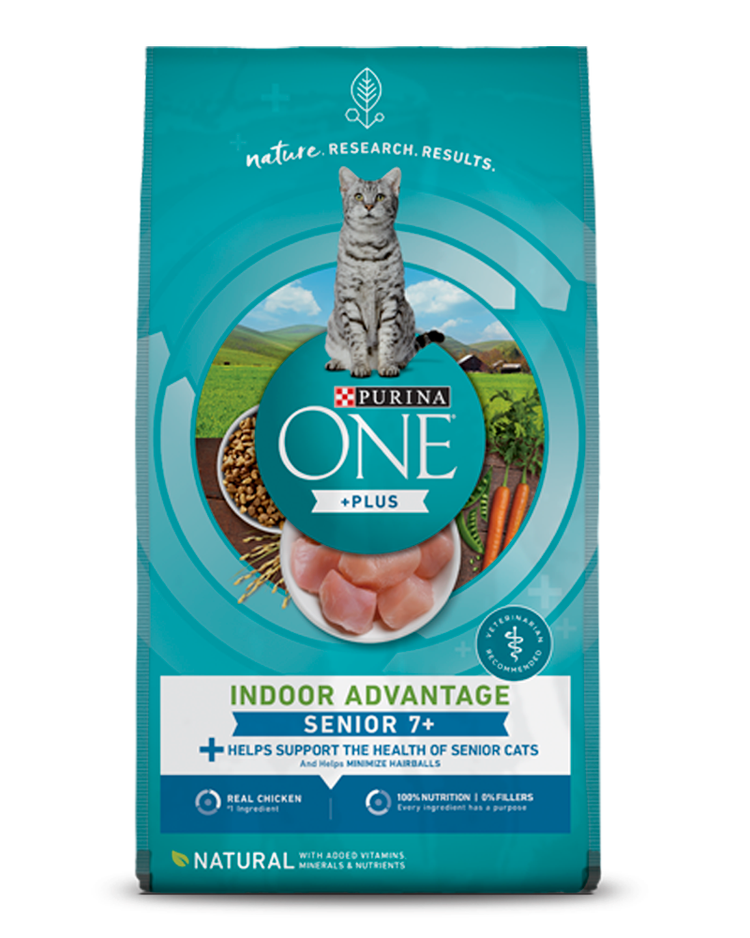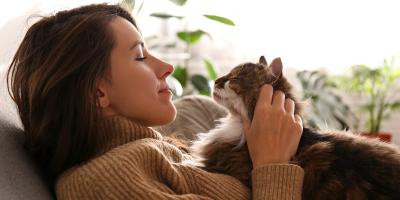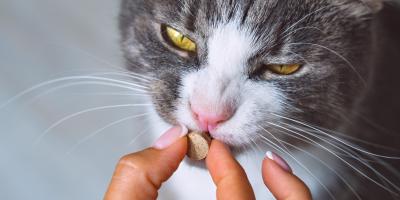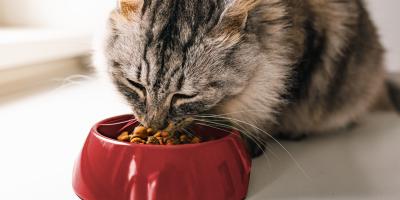Grooming and Bathing Older Cats

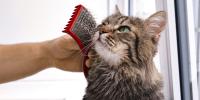
Cats are usually known for their impeccable grooming habits. However, as your cat ages, you might notice that your older cat is not grooming like they used to. Perhaps you noticed that your cat has matted or greasy fur. Maybe your aging cat is pulling their hair out or perhaps your senior cat has stopped grooming altogether. Whatever the case, it is important to understand what is going on with your loved one and how to meet their needs.
Understanding the Grooming Needs of Older Cats
As cats age, they begin to require different needs than when they were younger. Aging cats start to lose some of their mobility and flexibility in their old age, making their grooming habits more difficult to achieve. Some of this might be due to health concerns, such as arthritis, skin problems, and more. Therefore, knowing how to improve your older cat’s coat becomes all the more essential during their senior years. This includes learning how to groom and bathe your senior kitty to assist them in their old age.
If your cat was accustomed to being groomed as a kitten, then it will be easier for your older cat to adjust to these things. If not, then there might need to be a slower progression toward grooming and bathing your cat. The good news is grooming your cat can help to strengthen the bond between the two of you, and your loved one will truly appreciate the lack of knots in their fur. This will also give you a chance to look for any skin or coat irregularities that you might need to reach out to your vet about.
Importance of Regular Grooming for Senior Cats
Have you ever wondered, Why do old cats get matted fur? One of the reasons for this is because they might need extra assistance with grooming. If they are struggling to groom themselves, then things like knots and hairballs might begin to form causing a raggedy cat look. Not only can regular grooming help with this, but it can also get rid of the dead hair, remove any dandruff, maintain shedding, and keep your kitty’s coat healthy. Do your best to ensure that your kitty is being properly groomed throughout their lifetime and talk to your vet if you need further instructions for bathing, brushing, skin care, and more.
Step-By-Step Guide to Grooming Older Cats
Grooming aging cats comes with many factors to consider. Below we will guide you through the steps on how to groom a senior cat:
Brushing
You might be wondering, What is the best brush for my old cat? It will depend on your cat’s fur. For hairless cats, brushing isn’t necessary. For shorthaired cats, a brush or comb is all that is required. For longhaired cats, there are specially designed grooming tools that can assist with your older cat’s fur. At the very least, it is important to get your longhaired cat a good brush and comb to maintain their fur.
Most cats enjoy being brushed, but if they don’t, then it’s alright to let your cat go and try again later. You might even be able to entice them with treats to positively reinforce brushing. If your cat is longhaired, then it’s important to comb or brush them once a day. For shorthaired cats, combing or brushing them once a week might be all that is needed.
Sometimes you might come across knots or matting in your cat’s fur. You might ask yourself, How do I remove matted hair on my old cat? It’s important to be patient and careful when you try to untangle their fur. Start by holding the fur below the knot while you brush, so that it prevents your cat’s hair from being pulled and hurting them. Keep brushing until the knot is completely gone. If your cat’s coat is too unmanageable, then you might consider getting them in with a professional groomer who can help. You will also want to find the right nutrition for your senior cat to support a healthy skin and coat.
A well-brushed cat is a happier and healthier cat. Most will enjoy the bonding time they spend with you and the greater attention to maintaining their coat.
Bathing
There can be many questions that run through our minds as we ponder how to bathe an older cat. This becomes more prevalent if they are not used to getting baths. Bathing a senior cat can be a challenge, at times, but it will also help them manage any unwanted residual buildups on their skin and fur if they are struggling to groom themselves regularly.
The number of times needed to bathe an older cat will be dependent on their fur type and lifestyle. Generally, most shorthaired and hairless cats only need to be bathed if they get dirty or have skin issues. Longhaired cats may need the occasional bath to keep their coat healthy and to decrease any grease on their fur. Talk to your vet to see if they have any recommendations on the best cat shampoo and products that you can use on your loved one during their bath time.
Since most cats are not fans of taking baths, you will want to discuss with your veterinarian the different safety precautions you should keep in mind for you and your furball during bathtime. Once you have more instructions and are ready to attempt bathing your aging cat, you will want to consider the safety tips mentioned below. Furthermore, if there is someone around, you can always ask them to be your helper for extra support. During bathtime, use a calm voice and keep treats nearby to provide them with positive reinforcers. When bathtime is done, gently pat your kitty dry with a towel. If you prefer someone else to take on this challenge, consider opting for a professional pet groomer instead.
Overall Tips for Bathing Senior Cats Safely
There are a few safety tips you will want to keep in mind while bathing your senior cat:
- Brush your cat before bathtime. Brushing your kitty prior to bathing them to get rid of any loose hair, debris, or knots.
- Use cat-safe products. It’s important to use shampoos, conditioners, and other bathing products that are made specifically for cats.
- Keep the door closed. A soapy cat running around the home is not the most ideal situation, so it’s best to keep them contained within the bathing area.
- Keep the water temperature at an optimal level. If the water is too hot, this can cause your cat’s skin to burn. If the water is too cold, while this won’t hurt your cat, it could cause a lot of discomfort for your furball. It’s best to keep the water warm for your loved one.
- Do not fill the tub up too high. We don’t want your cat to be immersed in the water. We just want the water to be high enough to get them cleaned up properly, so no further than their belly.
- Avoid the face, eyes, and ears. This is for both water and bathing products, such as cat shampoo and conditioner. You don’t want the product(s) to get on their face and burn their eyes. You also want to try to keep water out of your cat’s ears. One trick to do this could be to place cotton balls in your cat’s ears prior to placing them in the bath.
- It’s best to use a nonslip pad in the bathtub. This will ensure that your cat doesn’t slip and slide everywhere while they are being bathed.
- Pat your cat dry, instead of rubbing them dry. This will help your cat’s fur not get matted up more. It will also be gentler on your cat so that you don’t accidentally pull on their hair while drying them off.
- Do not use a hair blow dryer to dry your cat’s fur. The heat from the hair blow dryer can burn their skin and create discomfort for your cat.
Talk to your vet about other safety tips you should consider while bathing your older cat.
While your cat may or may not enjoy bathing, they will enjoy the fresh feeling afterwards and this will help to maintain a healthier appearance for your loved one.
Nail Trimming
Cats like having their nails trimmed because it creates more comfort for them. One of the reasons your cats will scratch up items around the home is because they are trying to file their nails to make them more manageable. It is no different than when we humans clip and file our nails to keep them controlled and looking nice.
As your cat gets older, they will need more assistance with this. As with the other grooming activities, if your kitty got used to this in their youth, then it will be easier to trim their nails in their senior years. It’s best to reach out to your vet so they can show you how to trim your cat’s nails properly. When you are ready for this step, keep in mind to use cat-safe trimmers and nail filers; be gentle as you squeeze their paws to clip each claw; approach the nails from the sides as opposed to the tops; and keep treats nearby to reward your kitty. Whatever you do, be careful not to clip the nail quick, which has many nerve endings and blood vessels. This is the area of the nail that looks pink, and you should be able to see through it from the sides of the nail. Leave some space between the quick and where you plan to trim the nail. You should trim around the halfway point between the tip of the quick and the tip of the nail. It’s better to stay closer to the tip of the nail if you aren’t certain where the tip of the quick is located. If the quick gets trimmed by accident, then this will be very painful for your cat and can cause bleeding. If bleeding does occur, then you will want to immediately apply pressure and treat it with styptic powder or cornstarch to stop the bleeding. If you are still uncomfortable with trimming your cat’s nails on your own, then you can always take your cat to a professional groomer or their vet.
The more you take care of your cat’s nails, the more comfortable your cat will be and the better your home will look as well.
Skincare
Just like how we humans prefer healthy skin, so does your aging kitty. This is especially true if you have a hairless cat. The key to healthier skin is ensuring that they are getting plenty of hydration and moisture. You should feed them a complete and balanced diet which provides nutrients to support their skin and coat. There are also wet senior cat food and hydration supplements, such as Hydra Care, which can increase your cat’s moisture intake. Talk to your vet and see which option(s) might be best for your older cat.
The moisture content in the air could also affect your kitty’s skin. If the air is too dry for their skin, then you might want to consider setting up a humidifier in their favorite room(s). Your vet will provide other solutions too, especially for more serious dermatological cases.
Common Challenges in Grooming and Bathing Older Cats
One of the biggest challenges in grooming and bathing older cats is getting them to allow you to do this. If they got used to these things when they were kittens, then they will most likely not give you much trouble in their elderly age. However, even a senior cat can turn into a great fighter if they are frightened enough. Keeping them calm during these activities and using a lot of patience, treats, and positive reinforcement is crucial in helping your cat adjust to being properly groomed and bathed.
Another challenge is ensuring that you are taking the appropriate safety precautions for each grooming activity. Some forms of grooming aging cats can injure your loved one if you aren’t careful, such as accidentally cutting their nail quick when trimming their nails. Before you start any type of grooming on your cat, talk to your vet and do your proper research to make sure that you are taking the necessary safety protocols for each step. This will give your cat a better grooming experience and could even increase your bond with your furball.
If your cat has an underlying medical condition, such as a skin condition or another medical concern which could interfere with proper grooming, then this could create another challenge. In these situations, it’s best to discuss your options with your vet.
When to Seek Professional Help for Senior Cat Grooming
There might come a time where you wonder, Why is my old cat pulling their hair out? If you notice your cat overgrooming, then it is possible that there is some kind of underlying medical condition that is contributing to this odd behavior in your cat. Some of these conditions might include skin allergies or skin parasites. This could also be a form of stress-relief known as psychogenic alopecia. Whatever the cause, when you start to see overgrooming habits in your cat, then it’s usually a good idea to reach out to your vet for support. Your vet will be able to provide any necessary medications and treatments depending on what is causing your cat to pull out their own hair.
For more expert tips on caring for your senior cat, explore our other senior cat care articles.

Be Rewarded for Your Purina Purchases
Earn and redeem points for Purina products with myPurina app.


